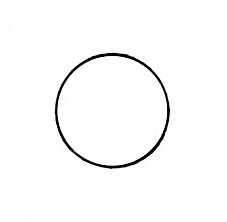Recently, over at Jon Schindehette’s
ArtOrder blog, he’s had several artists describe how they “made it” in the business. “Making it” is a phrase I shy away from because I don’t like to get too comfortable. This is not to say that I am critical of people who use the phrase or honestly feel that they have made it, it’s that I choose not to apply that phrase to myself. In my mind, it’s essential to keep the precariousness of my position at the forefront of my brain. Thinking this way ensures that I am always prepared for the worst and that I continue trying to push my work as far as I can in order to keep my clients happy lest the worst actually occur. Consequently, I really don’t feel like I’ve “made it” at all, and so I can’t offer such a story. But, I suppose I can tell you how I got where I am.
Let me begin by saying that it is criminal in many ways to gloss over my formative years given how substantial the contributions of the teachers who inspired and trained me as an artist were. Rather than get into it at this point, I will concentrate instead on those more immediate events that directly led me into the business and leave the tales of my education for another date.
I graduated from Pratt in 1998 with a portfolio full of book and editorial illustration that — like so many student portfolios — had little congruity and didn’t gel as a whole. The book work mostly targeted the young adult market while the editorial work was fairly standard political and social commentary. For several months I called and mailed work to many art directors throughout book, magazine, and newspaper publishing and even managed to get interviews with a few. I mailed postcards and packets, did drop-off days and cold calls, but what I failed to do was update my portfolio and after a year of trying had no work to show for my efforts. So, I got a job and ended up in public relations.
One of the best friends I made in college was a guy by the name of
Jeremy Jarvis. We met our freshman year when he lived a few doors down from me in the dorm. He, too, wanted to be an illustrator and after graduation began pursuing a very different facet of illustration than I had: fantasy/sci-fi gaming illustration. Initially I had no interest, but one day he called me and offered me work. You see, after working in the gaming field for a while, he eventually was asked to art direct a game for some small-time company that would require a lot of artwork to be commissioned. For some reason, he thought of me, and just like that, Jeremy dragged me into the field of gaming illustration.
As I said, I had a job at this time, so I could only paint at night and on weekends. So, during the week I worked my eight hours, came home, painted until I couldn’t keep my eyes open and went to bed. Rinse and repeat. I painted twenty-one pieces for Jeremy, but through no fault of his, I was only paid for three. I was pretty frustrated by the experience, and it would have been nice to have the money, but it wasn’t a total loss because I now had a new portfolio of gaming art.
Being the friend that he is, Jeremy then gave me a few names of people to call and send my work to; people in the gaming industry. I did as he suggested and was shocked when I started getting work with my new portfolio. The companies I was working for didn’t pay very well, but I still had my job and I was still getting paid to improve and diversify my new portfolio. This improved portfolio got me work from new, better paying clients, which in turn, improved my portfolio further, still. Through this method, I went from company to company until I finally got my foot in the door at Wizards of the Coast.
In April of 2001, I got laid off from my day job. My wife and I discussed our situation and she encouraged me to take advantage of being laid off and make a go at becoming a full-time freelancer. The gamble paid off. By the end of 2001, I had consistent work from Wizards of the Coast and several other companies, and was successfully paying our bills.
In 2005, I flew out to Washington for a friend’s wedding and seized the opportunity to meet with all the art directors I’d worked with in the Seattle area for lunch. I was going to be visiting the Wizards of the Coast offices, so I took a shot and emailed the art director for Magic, who at the time was Jeremy Cranford, and asked if I could meet with him while I was there. I was surprised when he said yes, and so the date was set. To say that it was one of the scariest interviews of my life is an understatement. This is partially because I was out of practice, and partially because I wanted so bad to work on Magic. Through some miracle, I managed to stumble my way through the interview, and after bluntly, constructively, and critically reviewing my portfolio, he agreed to give me work.
Today, my most regular client is Magic and in an odd twist of fate, it is now art directed by my friend, Jeremy Jarvis. My career has been built upon hard work, long hours, sacrifice, and trying to make the most of the opportunities presented me. Many people opened doors for me along the way and I have many to thank for where I am today, but Jeremy Jarvis opened the first door and so I say this: I got where I am because I have a really good friend.













